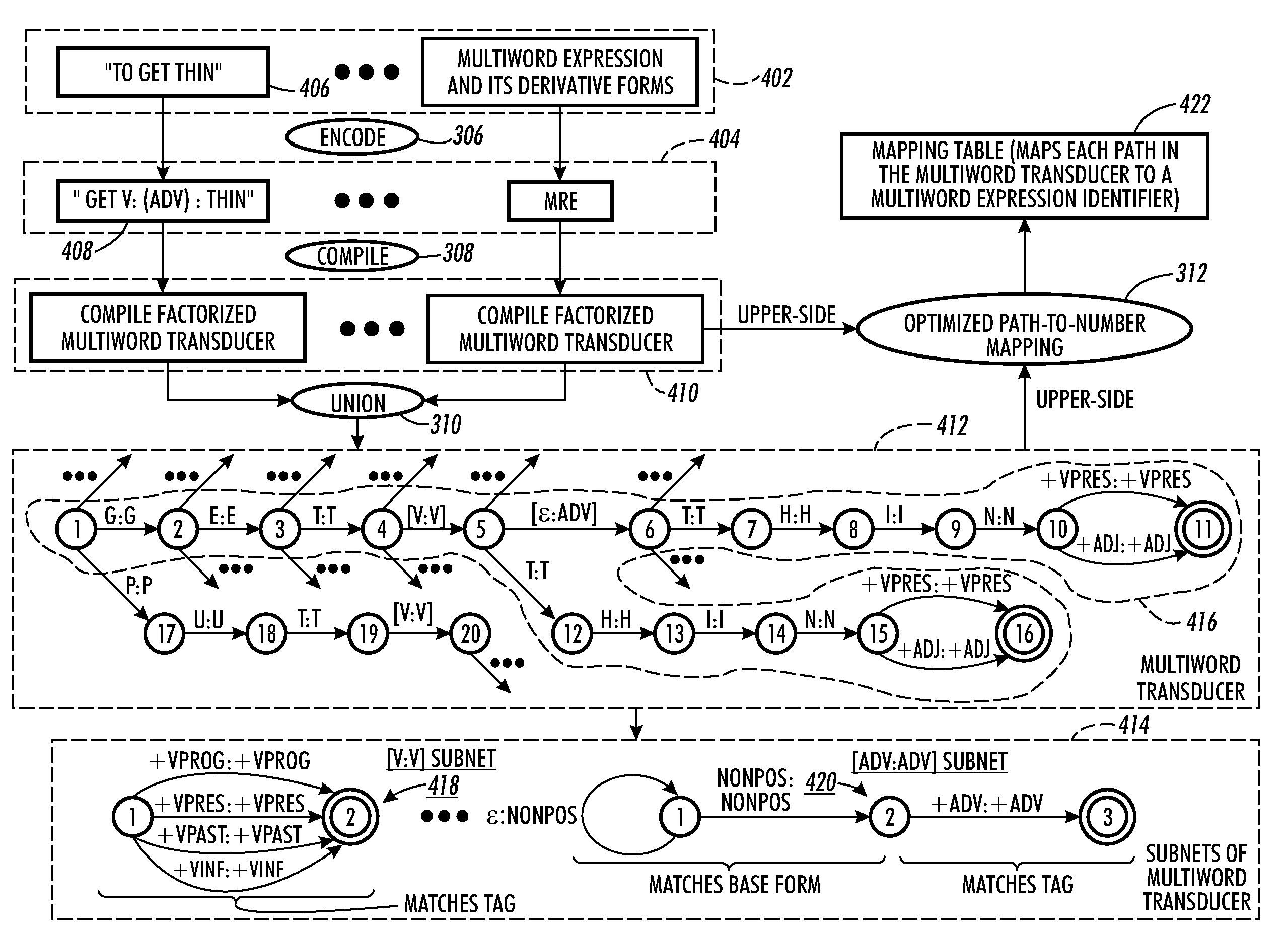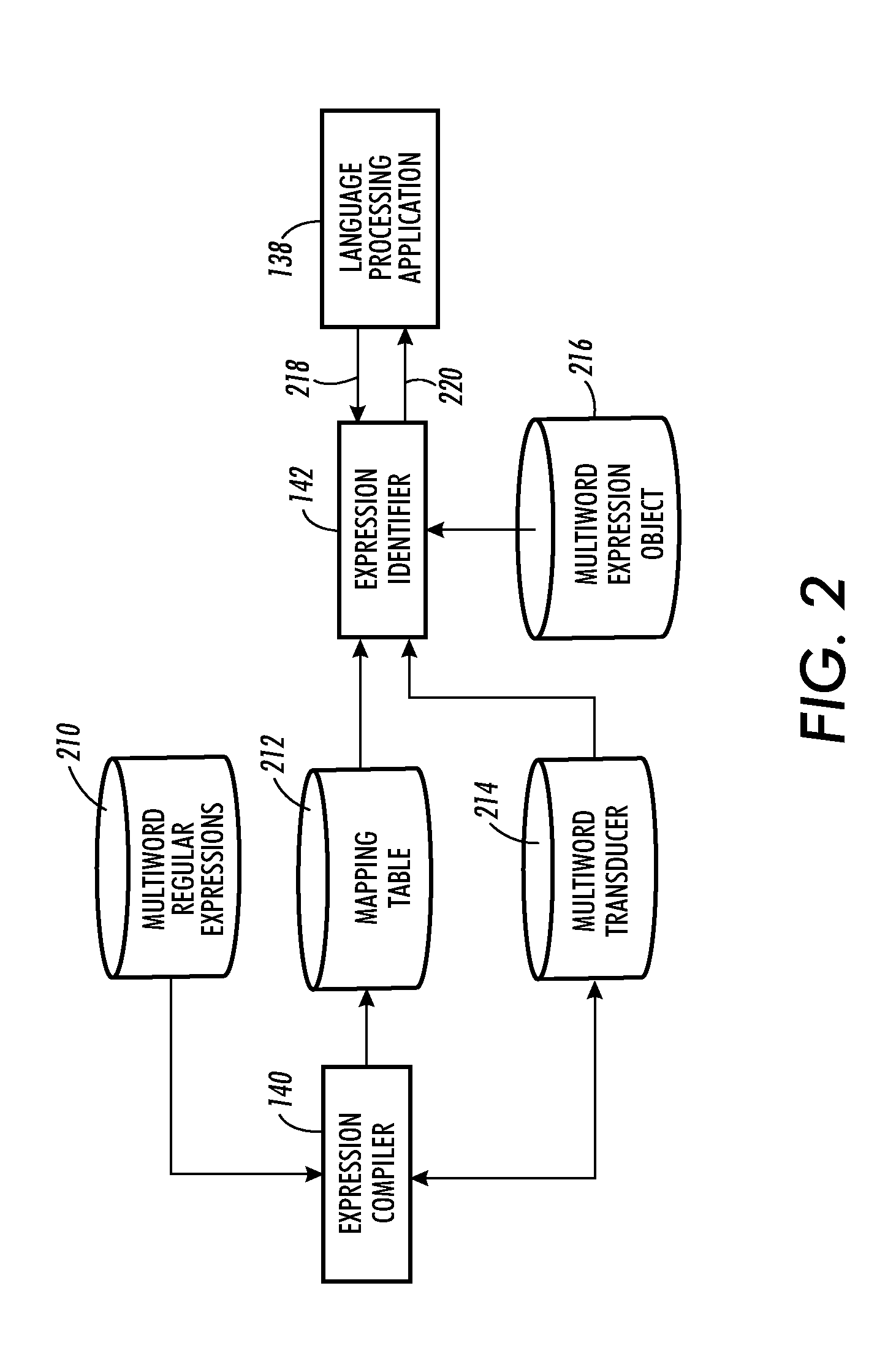Method and apparatus for recognizing multiword expressions
a multi-word expression and multi-word technology, applied in the field of information processing, can solve the problems of idioms made up of short words being missed, unable to meet the needs of the user, and significant memory demands, and achieve the effect of reducing the number of paths through the network
- Summary
- Abstract
- Description
- Claims
- Application Information
AI Technical Summary
Benefits of technology
Problems solved by technology
Method used
Image
Examples
Embodiment Construction
[0026]A. Conventions
[0027]“Finite state automata” and “finite-state transducers” (FST) are both finite-state networks that are represented in the figures using directed graphs that consist of states and labeled arcs. All finite-state networks contain a single initial state, also called the start state, and any number of final states. In the figures, states are represented as circles and arcs are represented as arrows. Also in the figures, the start state is always the leftmost state and final states are marked by a double circle.
[0028]Each state in a finite-state network acts as the origin for zero or more arcs leading to some destination state. A sequence of arcs leading from the initial state to a final state is called a “path” (or “complete path”). A “subpath” is a sequence of arcs that does not necessarily begin at the initial state or end at a final state. An arc may be labeled either by a single symbol such as “a” or a symbol pair such as “a:b” (i.e., two-sided symbol), where ...
PUM
 Login to View More
Login to View More Abstract
Description
Claims
Application Information
 Login to View More
Login to View More - R&D
- Intellectual Property
- Life Sciences
- Materials
- Tech Scout
- Unparalleled Data Quality
- Higher Quality Content
- 60% Fewer Hallucinations
Browse by: Latest US Patents, China's latest patents, Technical Efficacy Thesaurus, Application Domain, Technology Topic, Popular Technical Reports.
© 2025 PatSnap. All rights reserved.Legal|Privacy policy|Modern Slavery Act Transparency Statement|Sitemap|About US| Contact US: help@patsnap.com



